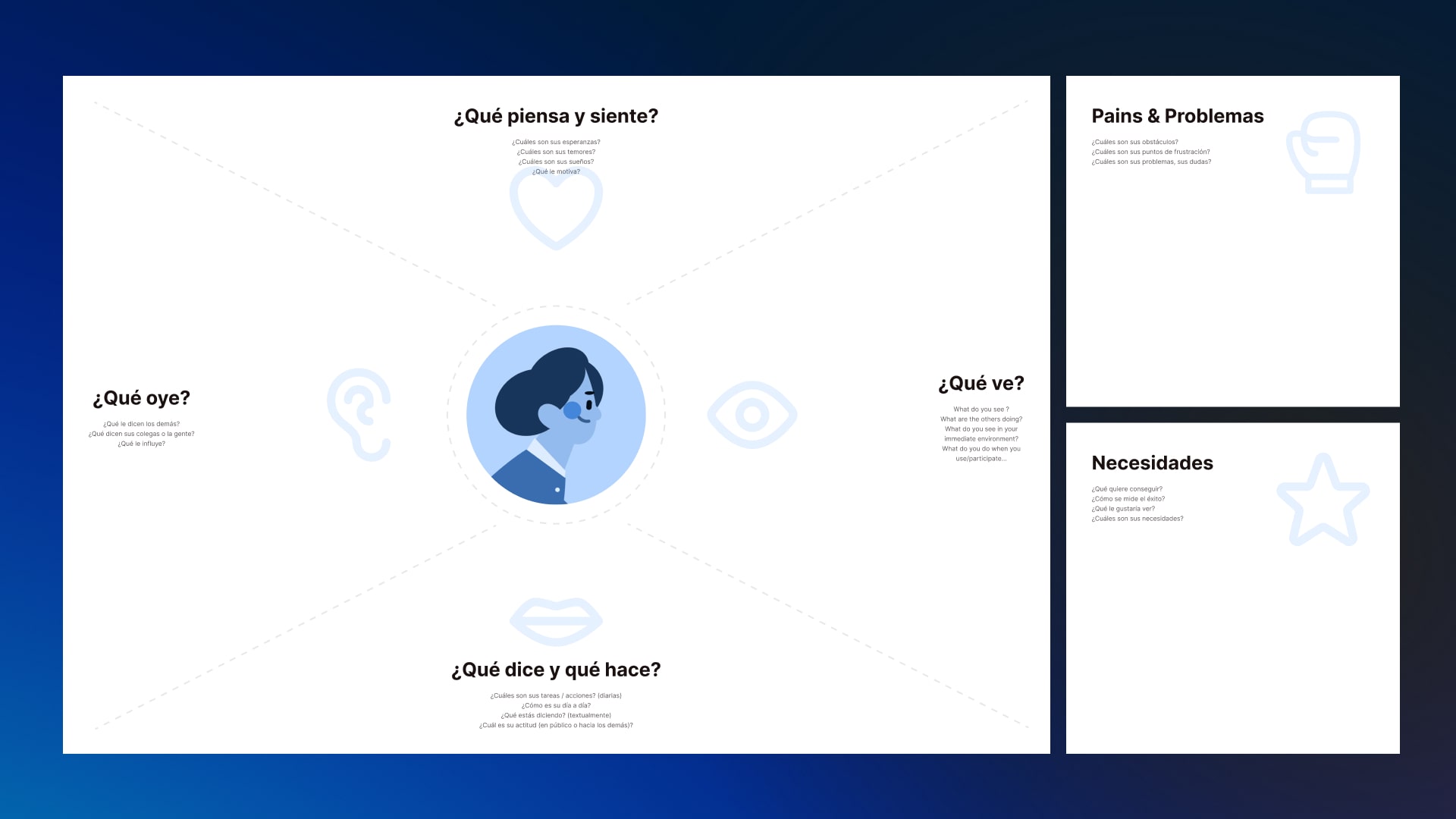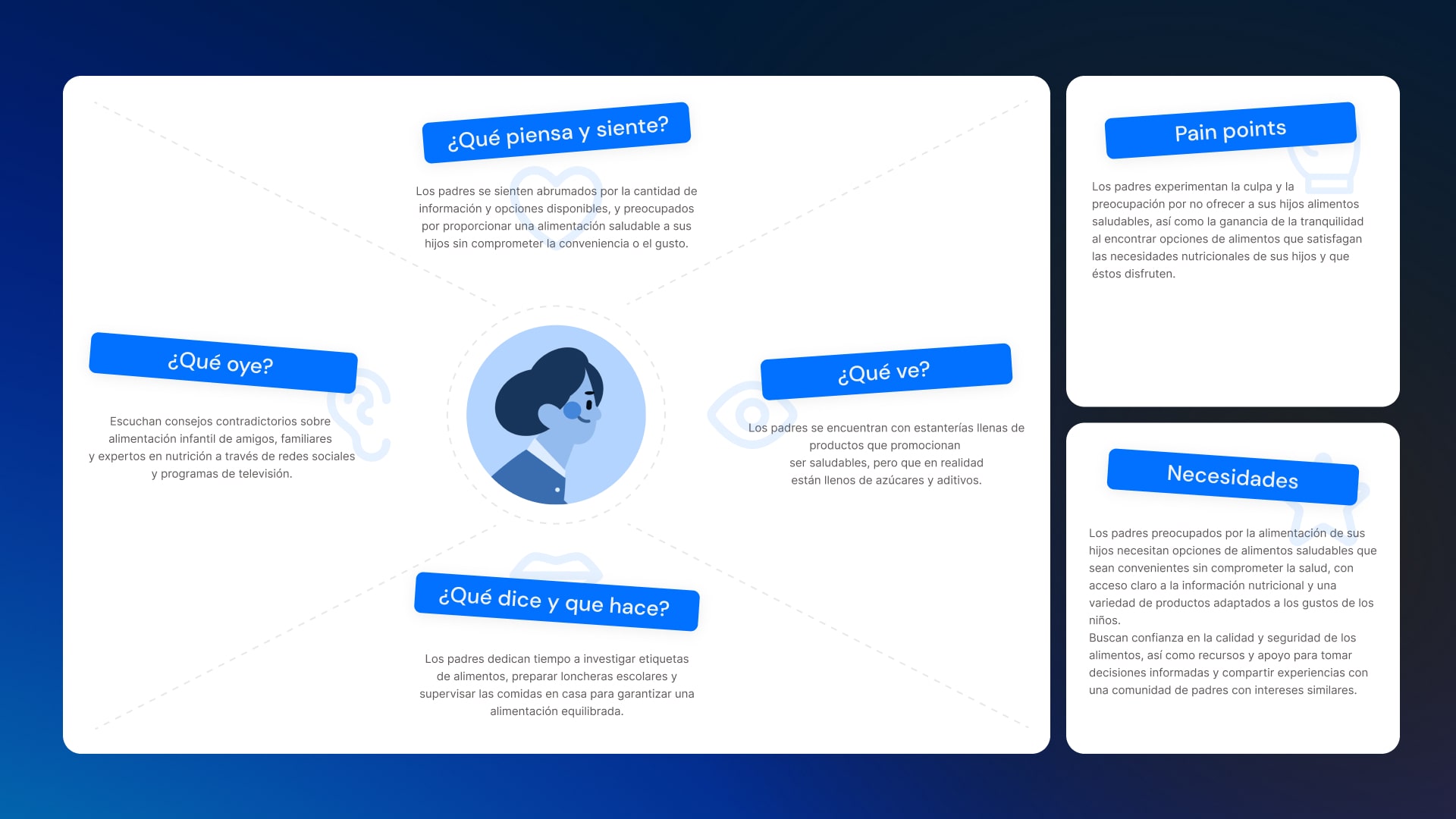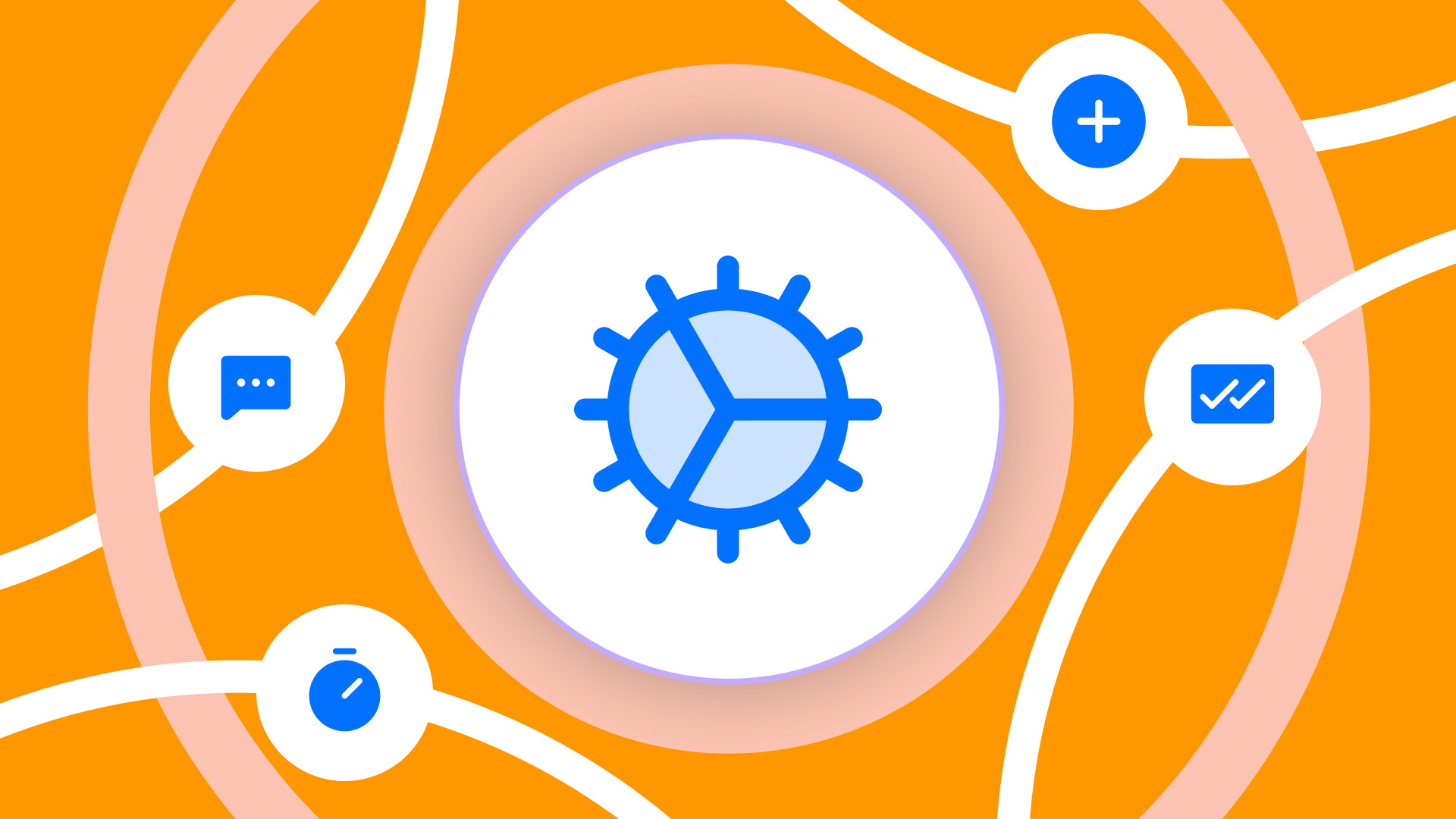Can you imagine having a tool that helps you better empathize with your family, partner, or friends? A tool that gives you insights into their actions and words, helping you understand how they truly feel and what they think. Well, in UX, such a tool exists—it’s called the Empathy Map.
Índice de contenidos
ToggleWhen designing a digital product, defining a value proposition, or implementing a marketing strategy, deeply understanding your target audience is crucial. However, some traditional research methods—such as surveys or interviews—often fall short in helping us fully empathize with users and interpret what they truly think and feel.
This is where the Empathy Map comes into play. It is a qualitative research tool that helps us gain a deeper understanding of our audience by organizing key aspects such as their thoughts, emotions, perceptions, challenges, frustrations, and goals.
What elements make up an empathy map? How and when should it be used? What is the best way to create one? In today’s blog, we will answer all these questions.
What Is an Empathy Map and When Should It Be Used?
An Empathy Map is a research tool designed to enhance empathy with the target audience in a more comprehensive way.
Visually speaking, it is a type of diagram where a team collectively organizes what they believe their Buyer Persona thinks, feels, and says. This structured approach makes it easier to analyze and understand users on a deeper level.
Empathy maps are primarily used during the research and design phases, but their value extends throughout the entire product or service lifecycle.
Let’s dive deeper into its components and see a visual example.
Key Elements of an Empathy Map
Typically, an Empathy Map consists of six sections or quadrants, although they can be grouped differently depending on the goal and the type of information available. The important thing is to consider all these aspects:
- What the user does and says: Examines the actions and statements of the user regarding the product or service. What are their daily activities related to the problem your product or service aims to solve?
- What the user sees: Analyzes the user’s environment and what they observe when interacting with the product or service. What external factors influence their experience?
- What the user hears: Considers the messages and feedback the user receives from their surroundings. What do friends, family, or colleagues say about the product or service? What do they hear from social media or news outlets?
- What the user thinks and feels: Explores the thoughts, emotions, and concerns of the user.
What are their deepest aspirations, fears, and desires? - What are their pains and gains?: Identifies the challenges and benefits the user experiences when using the product or service. What problems does your product or service solve for them? What value or improvements does it provide?
- What are their needs?:Defines the functional and emotional needs that the product or service should satisfy. Functional needs: Efficiency, convenience, time-saving, etc.
Emotional needs: Security, belonging, recognition, etc.

Main Uses of an Empathy Map:
During the research phase, an Empathy Map is not only a great tool for understanding users, but it also helps with several aspects that are often overlooked at the beginning:
- Organizing information: It helps structure and categorize the vast amount of data gathered during research.
- Filling in missing information: Surveys and interviews often leave gaps. The empathy map helps bridge those gaps to obtain a more complete user profile.
- Shifting to a customer-centric mindset :By visualizing user needs, desires, and concerns, it ensures that the team stays customer-focused, creating solutions that truly address their needs.
- Creating a consistent user experience: By deeply understanding the user’s emotions, motivations, and behaviors, the map ensures a cohesive and uniform experience across all touchpoints.
- Guiding the project’s evolution: As the project progresses, the map serves as a flexible guide, allowing adjustments and modifications based on new insights, ensuring continuous alignment with user needs.
Steps to Follow Before Creating an Empathy Map
Now that you know the components and main uses of an empathy map, it’s important to follow a structured process to create one effectively. Let’s break it down step by step:
- Define Your Target Audience Clearly: It may seem obvious, but you must identify your target users or customers before creating an empathy map. The more specific the audience, the more accurate the insights will be.
- Conduct Prior Research: To fill out the empathy map, we need to gather direct information from users through in-depth interviews, surveys, or simply by observing their behavior in a specific context. It is important to actively listen and ask open-ended questions to gain meaningful insights.
- Involve the Right Team: The empathy map should be created collaboratively. It’s essential to involve people from different departments, such as marketing, design, and product development. A diverse set of perspectives enriches the process and ensures that all relevant dimensions are considered.
- Analyze and Synthesize Information: Once the information has been gathered, it is necessary to analyze and synthesize it to identify patterns, trends, and opportunities. This may involve creating user profiles and developing customer journey maps.
Practical Example
Imagine a food company planning to launch a new line of healthy products for children. To better understand their target customers, they conduct in-depth interviews with parents and observe their shopping behavior at grocery stores.
Empathy Map for Health-Conscious Parents:
- Who is the user?: Parents of school-aged children (between 5 and 10 years old) who are looking for healthy and convenient food options for their kids.
- What does the user do and say?: Parents spend time researching food labels, preparing school lunches, and supervising meals at home to ensure a balanced diet.
- What does the user see: Parents encounter shelves full of products that claim to be healthy but are actually packed with sugars and additives.
- What does the user hear: They hear contradictory advice about children’s nutrition from friends, family, and nutrition experts through social media and television programs.
- What does the user think and feel: Parents feel overwhelmed by the vast amount of information and options available and are concerned about providing a healthy diet for their children without compromising convenience or taste.
- What are their pain points and benefits: Parents experience guilt and worry about not offering their children healthy food, but they also gain peace of mind when they find food options that meet their children’s nutritional needs and that they enjoy.
- What are their needs: Parents concerned about their children’s nutrition need healthy food options that are convenient without compromising health. They seek clear access to nutritional information and a variety of products tailored to children’s tastes. They look for trust in the quality and safety of the food, as well as resources and support to make informed decisions and share experiences with a community of like-minded parents.

Using this Empathy Map, the company can now develop a digital product that directly addresses the concerns and needs of its target audience—offering healthy, convenient, and kid-friend






